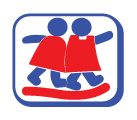Food Allergies and Daycare
A food allergy complicates normal routines and might endanger your child’s life. That’s why many parents feel most confident monitoring their child’s habits and diet themselves. Not only is this an overwhelming task, it doesn’t work when you need child care to help you juggle your many responsibilities.
You might feel frightened to leave your child and his or her unique care in another person’s hands. However, you can use the following tips to ensure you and the daycare facility do the best job to keep your child safe, even with food allergies.
Know How to Avoid Allergens
The best way to protect your child from the effects of a reaction is obvious — avoid trigger foods altogether. Work with your daycare provider to implement some of the following policies if they haven’t already.
Awareness
Encourage the facility staff to prominently display a list of allergies in eating areas and food preparation spaces if possible. Your child can also wear a medical bracelet with a list of his or her allergies.
Ask the facility’s staff if they’re willing to implement educational activities on allergies. This can help other children understand the effects of food allergies and explain any different treatment your child receives.
The staff should also be aware of non-meal dangers. Crafts that involve food products, like peanut butter for a bird feeder or flour for a dough, can trigger a reaction.
Additionally, it’s helpful if other adults know about the allergy. Nurses, volunteers, and parents can all help look for food sharing and allergy symptoms.
Throughout the process, develop a positive and respectful relationship with other parents and the daycare staff. Use facts to help others understand food allergy dangers.
Today, around 1 in every 13 children has a food allergy, so there’s a chance you’ll find other parents facing the same situation. Work together to create a safe and informative environment to protect everyone’s children.
Staff Training
Ensure that care providers at the daycare have all the information they need to best take care of your child.
Although simple, education on the importance of reading food labels is vital. This includes the ability to recognize trigger foods by various names. For example, casein and racaldent are some of the ingredients that contain milk protein but don’t look like milk.
Appropriately remind care providers about allergies to ensure something doesn’t slip through the cracks. It’s easy to get comfortable with routines over time, so a helpful refresher can ensure everyone takes the allergy seriously.
Child Training
When your child is old enough, educate him or her directly. Remind your child to always wash his or her hands and arms before and after a meal. You should also teach your child not to share utensils, plates, or cups with others.
Tell your child to only take food from a trusted adult and coach him or her on when and how to tell an adult when a reaction is coming on.
Meal Planning
If your daycare provides food, give them a list of safe snacks and foods your child can eat. Work with the facility to create a care plan that includes written instructions about what food(s) to avoid.
If your child’s allergies are severe enough, you may need to send all meals and snacks with him or her, even if the facility offers food. Provide the facility with some non-perishable snacks to store for spontaneous treats.
If there are events, celebrations, or other activities that often have food, ask to be involved. You can protect your child, raise awareness, and get involved in a growing community.
Know How to Treat Reactions
While proper preparation and education can prevent a reaction, there’s still the chance a dangerous incident will occur. Since allergic reactions can be life threatening, ensure that you and the daycare facility are as prepared as you can be.
Allergy Action Plan
Work with your physician to create written instructions on recognizing a reaction. Also include details on names, doses, and administration of medications. Work with the daycare to create a plan of action for any potential issues.
You’ll want to update your plan every year or as procedures change. Your child may outgrow allergies, gain new allergies, or have a change in treatment.
Anaphylaxis
While some reactions simply result in a rash or upset stomach, a serious reaction can lead to anaphylaxis.
Anaphylaxis can include airway swelling, loss of consciousness, difficulty breathing, a severe drop in blood pressure, and death. Care providers should know the symptoms of anaphylaxis. Additionally, they should feel confident about when and how to administer an auto-injector device, like an EpiPen.
Medication
Parents and staff should work together to get up-to-date medications. Find a proper place to store these items in an unlocked area that all staff members can access.
Ensure that the staff at the daycare feel comfortable assessing when to administer a medication and how to do so. Suggest that adults and children run practice drills to prepare. This will help decrease stress should a reaction occur.
You know your child best, but it isn’t possible for you to be there every second. Use these tips to ensure the experts at your chosen child care facility provide the best care for your child’s specific needs.


